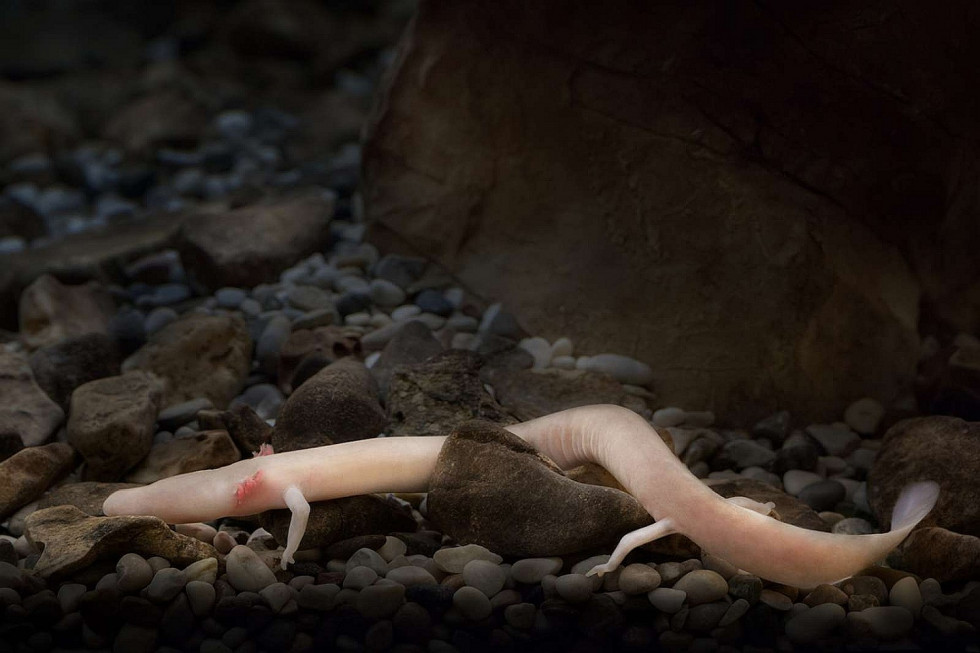Young Proteus salamanders or “human fish” will soon be on display for visitors to Postojna Cave
The event was covered by global media outlets (BBC, New York Times, The Observer, Discovery Channel, CNN). From Tasmania to Canada, millions asked themselves: are there actually dragons still living among us? Where is this Postojna Cave, where the dragons live, and where in the world is Slovenia?
Three years ago, 22 baby human fish were hatched at Postojna Cave, which according to sources at Postojna Cave will soon be on display for visitors, but under strictly controlled conditions. 21 of the hatchlings survived, and are growing in an underground laboratory developed for that purpose, but soon they will have to be moved to a larger aquarium. Scientists are not only excited about the exceptionally high (92-percent) survival rate, but also with their rapid development. The 21 hatchlings are healthy and are perfect replicas of adult salamanders, and will soon be on display for the public.
Postojna Cave built an underground laboratory for the hatchlings, in which their development was guided and monitored under strictly controlled conditions. The laboratory’s contributions to the understanding of the development of human fish are priceless, as they are no longer surprising “just” for the fact that they can live up to 100 years, and can survive without food for 6 years. According to the scientists, this unique laboratory represents a new milestone in the establishing of optimal man-made conditions for the successful raising of Proteus salamanders, which in the future could make a significant contribution to the preservation of this exceptional species.


